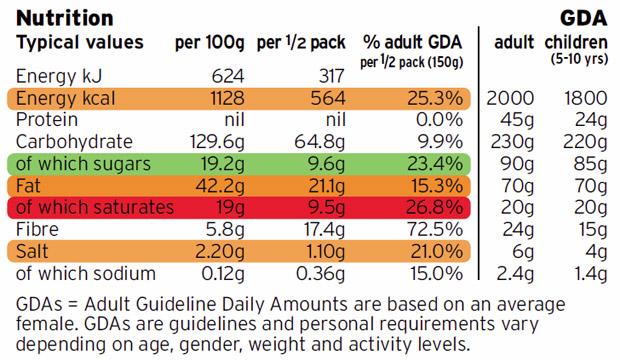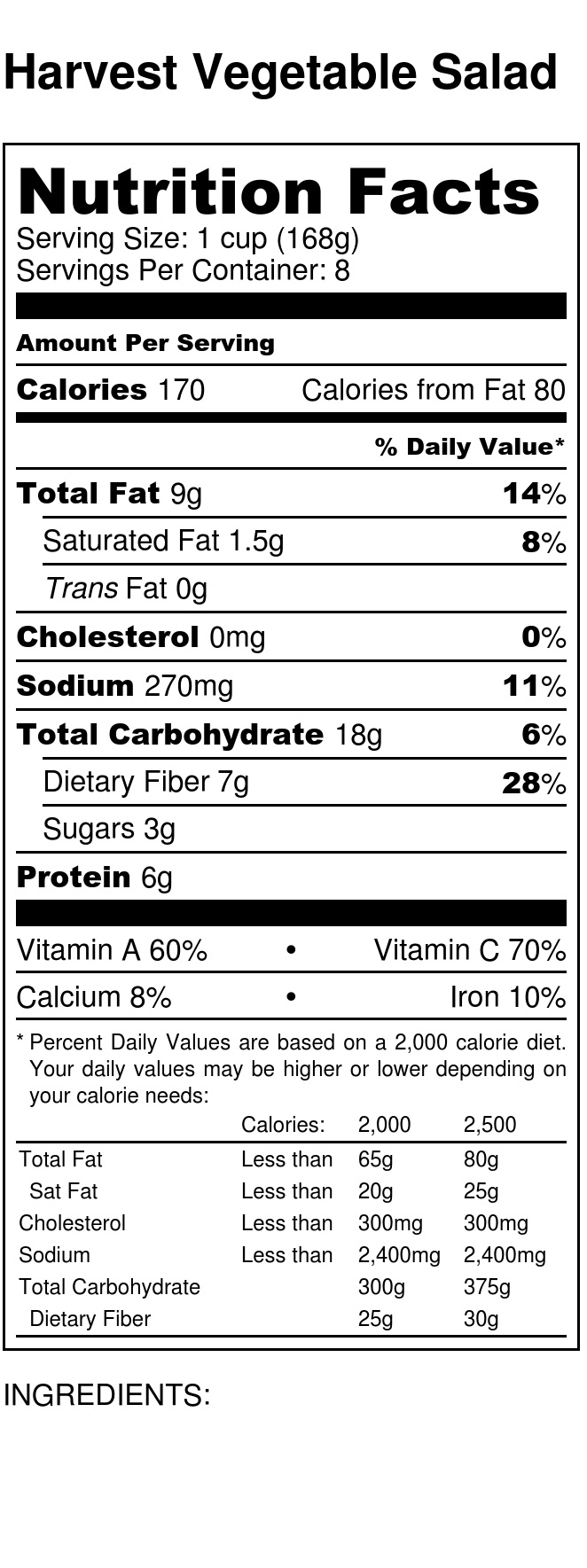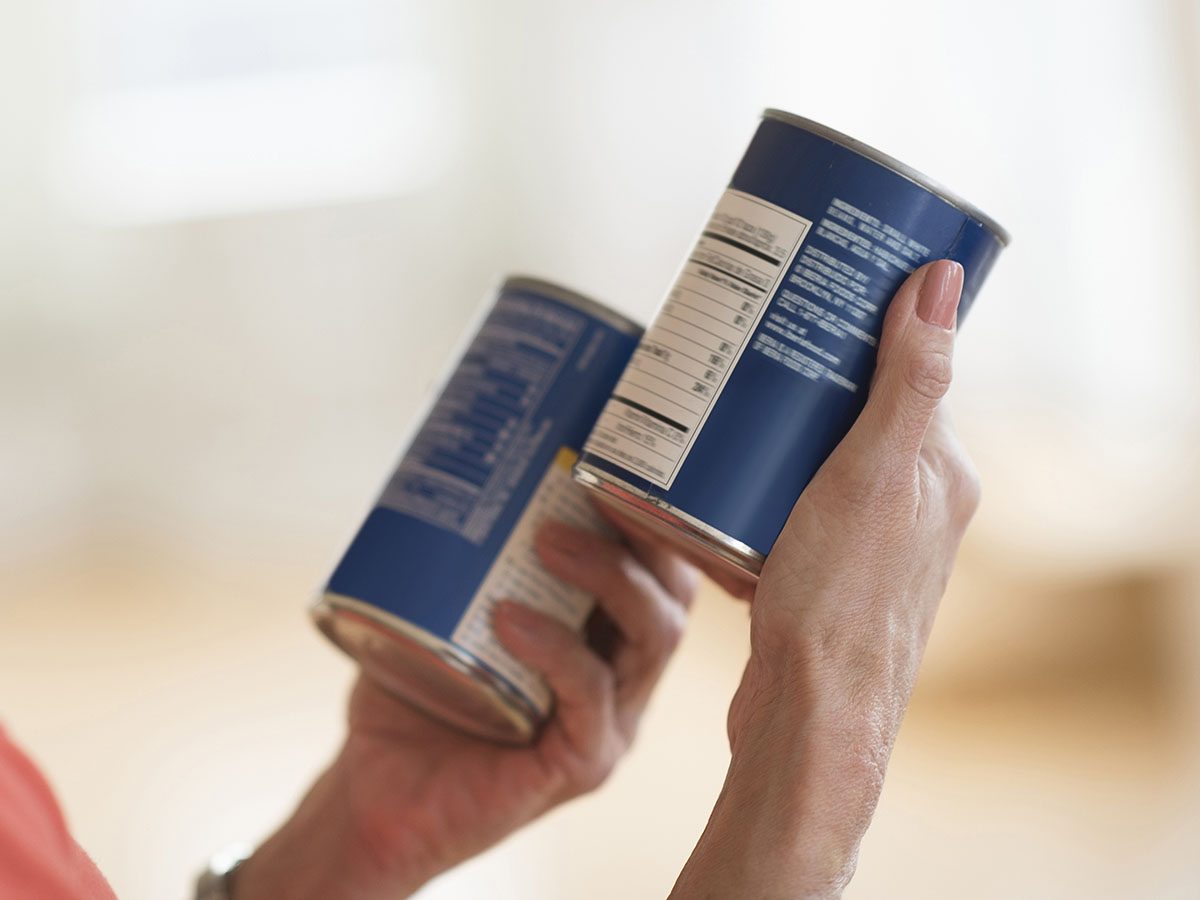41 reading calories on food labels
How To Read Food Labels - 10 Tips | Pritikin Program For Eating Right It's on the Nutrition Facts label. Unfortunately, it doesn't tell you "percent of calories from fat," which is how all health guidelines direct us to limit fat. You've got to do a little math. Divide the number of calories from fat by the total calories. (If the serving's 150 calories, 50 of which are fat, your product is 33% calories from fat.). Food Labels (for Teens) - Nemours KidsHealth A food with 5% or less of a nutrient is low in that nutrient. A food with 10%–19% of a nutrient is a good source of that nutrient. A food with 20% or more of a nutrient is high in that nutrient. The information on food labels is based on an average adult diet of 2,000 calories per day. The actual number of calories and nutrients that kids ...
How to Understand and Use the Nutrition Facts Label | FDA 25.02.2022 · Overview. The information in the main or top section (see #1-4) of the sample nutrition label (below) can vary with each food and beverage product; it …

Reading calories on food labels
3 Ways to Read Nutrition Facts on Food Labels - wikiHow Foods that tend to have a low caloric content are usually good for you, like avocado, celery, or corn. Empty calories refer to calories that are low in nutritional value, like pizza, soda, or sausage. 2 Read the fat content in a serving and check what types of fat are present. How to Read Food Labels Without Being Tricked - Healthline Product ingredients are listed by quantity — from highest to lowest amount. This means that the first ingredient is what the manufacturer used the most of. A ...Helps people make better food choices: can be ...Honest and transparent breakdown: most peop...Helpful for managing health conditions: not alw...Pros: Cons Reading Food Labels (for Parents) - Advocate Aurora Health Find out how to make healthy food choices for your family by reading food labels.
Reading calories on food labels. This Is How to Read a Nutrition Facts Label on the Keto Diet This act mandated that, with a few exceptions, all packaged foods needed nutrition labels — thus creating the black-and-white labels we see on packaged foods today. The nutrients that required labeling included: Calories Calories from fat Total fat Saturated fat Cholesterol Sodium Total Carbohydrate Dietary fiber Sugars Protein Vitamin A Vitamin C How To Read Food and Beverage Labels | National Institute on Aging Or you can call the U.S. Department of Agriculture's Food and Nutrition Information Center at 301-504-5414. Understanding percent Daily Value (% DV) The percent Daily Value (% DV) tells how much a nutrient in a serving of the food or beverage contributes to a total daily 2,000-calorie diet. How Do They Calculate Calories on Food Labels? It's important to recognize that 4-9-4 is an average, and not an exact amount. For example, 1 gram of fat in one food may yield 8.34 calories while 1 gram of fat from another food yields 9.7 calories. The same thing happens with carbohydrate and protein: the 4-9-4 is an average, not an exact amount. The Basics of the Nutrition Facts Label Step 4: Check Out the Nutrition Terms. Low calorie: 40 calories or less per serving. Low cholesterol: 20 milligrams or less and 2 grams or less of saturated fat per serving. Reduced: At least 25% less of the specified nutrient or calories than the usual product. Good source of: Provides at least 10 to 19% of the Daily Value of a particular ...
Use food labels - Canada's Food Guide 14.10.2020 · Changes to food labels. Over the next 4 years, you will see changes on food labels. These changes will make it easier to: know what’s in your food; make healthier food choices; How to use food labels. Different types of information may be available on food packages. This information can help you make informed choices about healthy and safe foods. Reading and Understanding Food Labels and Nutrition Info - Beaumont Many fresh meats, poultry and fish do not have a nutrition facts label. The average cholesterol per ounce of an animal product is 25 mg. Percent of calories from fat Divide the calories from fat by the total calories. Keep in mind not every food you eat needs to contain less than 30 percent of the calories from fat. Understanding Food Labels | The Nutrition Source | Harvard T.H. Calories is an important number to many consumers. The label lists the calorie amount for one serving of food. The serving size, also important but often unnoticed, is easily doubled or tripled when not paying attention to the serving size, quickly inflating the calories. Highlighting both of these values emphasizes their importance and relationship. Serving sizes have also been … How to Understand and Use the Nutrition Facts Label | FDA That is two times the calories and nutrients shown in the sample label, so you would need to double the nutrient and calorie amounts, as well as the %DVs, to see what you are getting in two...
How to Read Nutrition Facts Label - Food Network Take that 1600 and multiply it by 0.30 (based on our goal of getting 30% of our calories from fat). You'll get 480 calories. Then, to figure out the grams of fat you want to aim for each day,... Food label reading guide | Nutrition Australia What to look for when reading food and drink labels (per 100g) Health Star Ratings The Health Star Rating is a front of pack labelling scheme which can be used to make healthier food choices at a glance. The rating range is from ½ - 5 stars and the more stars, the healthier the choice. Recommended minimum star ratings for food and drink categories PDF TO CARE 4 YOURSELF READING A NUTRITION FACTS LABEL - novoMEDLINK sodium. Reading the label can help you compare the amount of sodium in foods so that you can choose lower-sodium options. Nutrition Facts 8 servings per container Serving size 2/3 cup (55g) Calories 230 5% 10% 0% 7% 13% 14% 20% *The % Daily Value (DV) tells you how much a nutrient in a serving of food contributes to a daily diet. 2,000 calories Reading Food Labels Worksheet - defenderring.co Learning intention the students will investigate food packaging to understand how information on food labels can help them make better food choices. • read nutrition facts labels to understand the properties of that food. Source: . Reading food labels worksheet australia. Parts of a food label: Source:
How To Read Food and Beverage Labels | National Institute on … 24.02.2022 · Although the average person needs 2,000 calories a day to maintain their weight, individuals may need more or fewer depending on their lifestyle. If you are eating fewer calories per day and eat one serving, your % DV will be higher than what you see on the label. Some nutrients on the Nutrition Facts label do not have a % DV, but consumers can ...
A Guide to Reading Food Labels - University of Rochester 27.02.2013 · A Guide to Reading Food Labels Reading food labels can help you make wise food choices. Most foods list nutrition information on the package label, called Nutrition Facts. These facts can help you compare foods and choose the healthiest option. Sample Label 1 Serving Size Calories . Limit These . Nutrients . Get Enough of These Nutrients 5 Nutrition …
Reading Food Labels (for Parents) - Nemours KidsHealth Reading Food Labels; Reading Food Labels. Reviewed by: Mary L. Gavin, MD. Listen. Play Stop Volume mp3 Settings Close Player. Larger text size Large text size ...
Reading Food Labels (for Parents) - Humana - Ohio The information on food labels is based on an average diet of 2,000 calories per day. But the actual number of calories and nutrients that kids need will vary according to their age, weight, gender, and level of physical activity.
How to read food labels: MedlinePlus Medical Encyclopedia Always check the serving size first. All the information on the label is based on the serving size. Many packages contain more than 1 serving. For example, the serving size for spaghetti is most often 2 ounces (56 grams) uncooked, or 1 cup (0.24 liters) cooked. If you eat 2 cups (0.48 liters) at a meal, you are eating 2 servings.
Food labels - NHS Colour-coded nutritional information tells you at a glance if the food has high, medium or low amounts of fat, saturated fat, sugars and salt: red means high amber means medium green means low In short, the more green on the label, the healthier the choice.
Learning About Calories (for Kids) - Nemours KidsHealth High-calorie foods — such as sugary sodas, candy, and fast food — quickly add up to too many calories. Instead, eat a healthy, balanced diet. Exercising and playing are really important, too, because physical activity burns calories. How the Body Uses Calories. Your body needs calories just to operate — to keep your heart beating and your lungs breathing. As a kid, your …
Food Labels | CDC Check the Serving size first. All the numbers on this label are for a 2/3-cup serving. This package has 8 servings. If you eat the whole thing, you are eating 8 times the amount of calories, carbs, fat, etc., shown on the label. Total Carbohydrate shows you types of carbs in the food, including sugar and fiber.
The Basics of the Nutrition Facts Label 04.03.2022 · Use the percent Daily Values (DV) to help evaluate how a particular food fits into your daily meal plan. Percent DV are for the entire day, not just one meal or snack. Daily Values are average levels of nutrients based on a person who eats 2,000 calories a day. A food item with a 5% DV of fat provides 5% of the total fat that a person who needs 2,000 calories a day …

Reading Food Labels | National Institute on Aging | Reading food labels, Food labels, Nutrition ...
How to Read Nutrition Facts | Food Labels Made Easy - YouTube To support our channel and level up your health, check out:Our Fast Weight Loss Course: B...
PDF How to Read the Food Label - Risk Services This is the number of calories you'll eat in one serving of a food. Calories needed each day depends on your age, sex, height, weight, and amount of physical activity. Estimates range from 1,600 to 2,400 calories for women and 2,000 to 3,000 calories for men. If you're trying to lose weight, avoid or limit high-calorie foods.

PFTA Personal Trainer Certification School in Austin, Dallas, Houston, San Antonio, TX: Reading ...
Understanding food labels - Canada.ca Food labels, nutrition facts tables, serving size, ingredients, % daily value, nutrition claims. Services and information. Nutrition facts tables. How to use, what is in them, foods that don't have a nutrition facts table. Serving size. How to use the serving size on nutrition facts tables. List of ingredients . About list of ingredients on packaged foods, common terms used for some ...
15 Best Images of Food Label Worksheet - Food and Nutrition Worksheets, Printable Food Nutrition ...
How to Read Nutrition Labels - Verywell Fit The column on the right side of the nutrition label has numbers displayed in percentages. The numbers listed under "% Daily Value" tell you how much a particular nutrient contributes to your total daily diet if you consume 2,000 calories per day. If you consume more or less than 2,000 calories per day, these figures will not be accurate for you.
Reading Nutrition Facts Labels - University of Arizona If you eat both servings then you'll actually eat 500 calories. Look at the percent daily value. As a guideline, a % daily value about 20% is high and below 5% is considered low. So this product is high is Calcium and Sodium, but low in Iron, Fiber and Vitamins A and C. Look out for saturated fat, trans fat, sodium and cholesterol.
How to Read a Nutrition Label: Common Terms Found on Supplement Facts The FDA, or Food and Drug Administration, regulates the words that are used on food labels. Here are a few that you should look for: Calorie-free: under 5 calories/serving
15 Best Images of Food Label Worksheet - Food and Nutrition Worksheets, Printable Food Nutrition ...
PDF A Guide to Reading Food Labels - University of Rochester of calories from fat. You should limit the number of calories from fat to 20-35% of your total daily calories. In the sample label, there are 250 calories in one serving and 110 calories from fat. This means almost 50% of the calories in a single serving of this food come from fat. Due to its high fat content, this food is not a healthy choice.









Post a Comment for "41 reading calories on food labels"